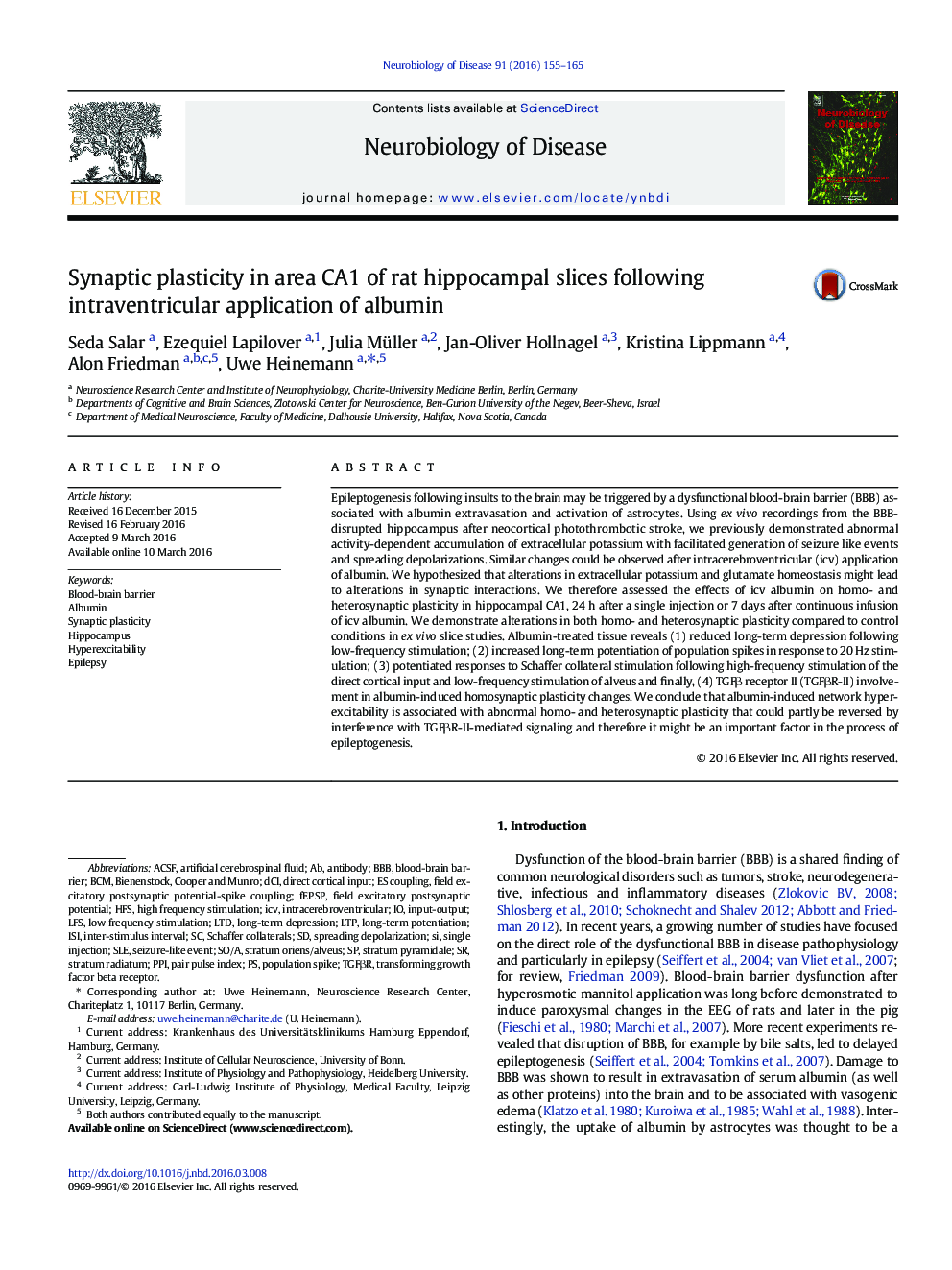| Article ID | Journal | Published Year | Pages | File Type |
|---|---|---|---|---|
| 6021382 | Neurobiology of Disease | 2016 | 11 Pages |
Abstract
Epileptogenesis following insults to the brain may be triggered by a dysfunctional blood-brain barrier (BBB) associated with albumin extravasation and activation of astrocytes. Using ex vivo recordings from the BBB-disrupted hippocampus after neocortical photothrombotic stroke, we previously demonstrated abnormal activity-dependent accumulation of extracellular potassium with facilitated generation of seizure like events and spreading depolarizations. Similar changes could be observed after intracerebroventricular (icv) application of albumin. We hypothesized that alterations in extracellular potassium and glutamate homeostasis might lead to alterations in synaptic interactions. We therefore assessed the effects of icv albumin on homo- and heterosynaptic plasticity in hippocampal CA1, 24 h after a single injection or 7 days after continuous infusion of icv albumin. We demonstrate alterations in both homo- and heterosynaptic plasticity compared to control conditions in ex vivo slice studies. Albumin-treated tissue reveals (1) reduced long-term depression following low-frequency stimulation; (2) increased long-term potentiation of population spikes in response to 20 Hz stimulation; (3) potentiated responses to Schaffer collateral stimulation following high-frequency stimulation of the direct cortical input and low-frequency stimulation of alveus and finally, (4) TGFβ receptor II (TGFβR-II) involvement in albumin-induced homosynaptic plasticity changes. We conclude that albumin-induced network hyperexcitability is associated with abnormal homo- and heterosynaptic plasticity that could partly be reversed by interference with TGFβR-II-mediated signaling and therefore it might be an important factor in the process of epileptogenesis.
Keywords
TGFβRDCIPPILFSfEPSPaCSFHFSintracerebroventricularBCMICVstratum radiatumAlbuminISIPopulation spikelong-term depressionstratum pyramidaleEpilepsytransforming growth factor beta receptorhigh frequency stimulationlow frequency stimulationlong-term potentiationLTPSingle injectionseizure-like eventBBBSchaffer collateralsinter-stimulus intervalSLEBlood-brain barrierartificial cerebrospinal fluidLTDHyperexcitabilityHippocampusInput-outputAntibodyField excitatory postsynaptic potentialSynaptic plasticityspreading depolarization
Related Topics
Life Sciences
Neuroscience
Neurology
Authors
Seda Salar, Ezequiel Lapilover, Julia Müller, Jan-Oliver Hollnagel, Kristina Lippmann, Alon Friedman, Uwe Heinemann,
